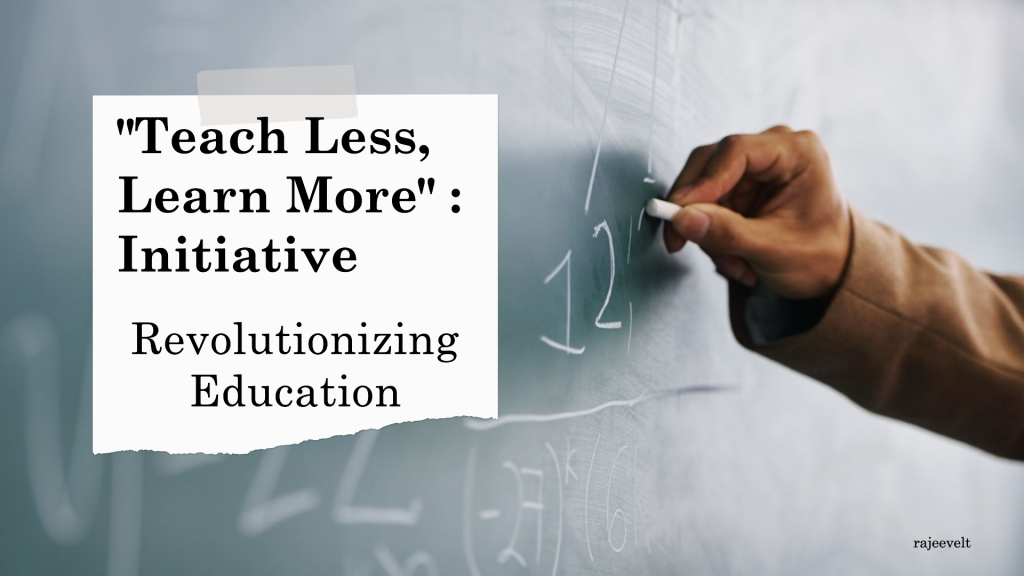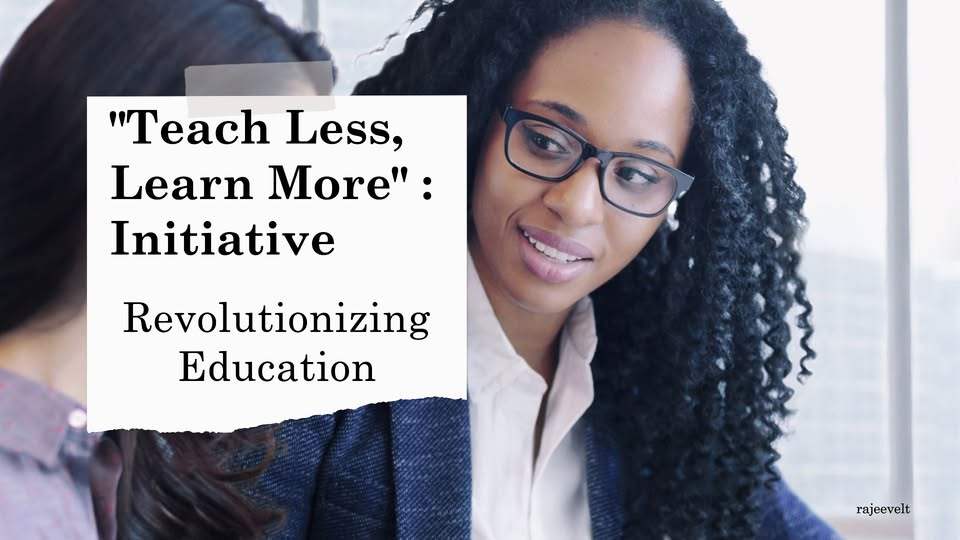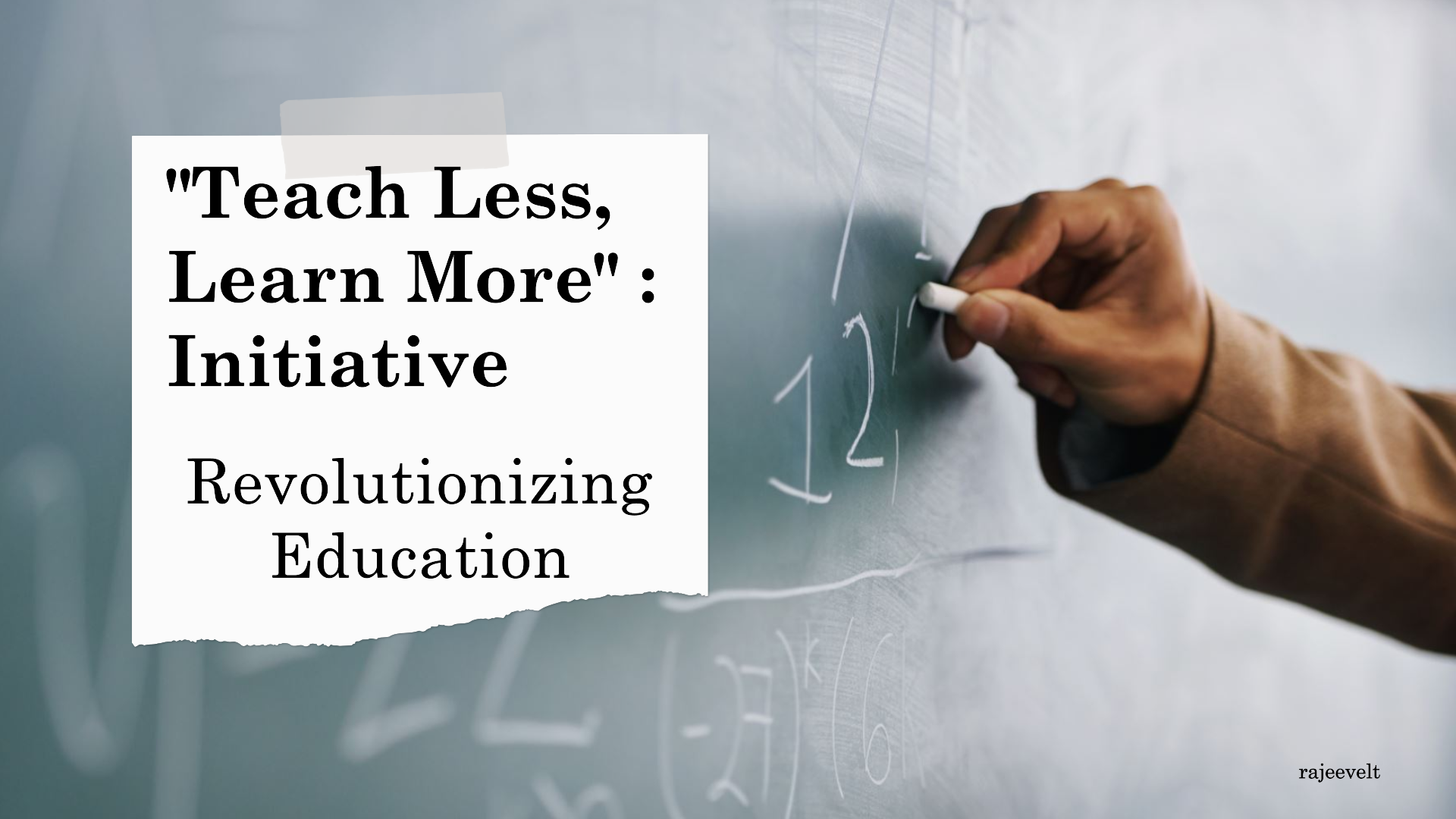
Comparative Visualization of TLLM Applications in Singapore and Finland
Visualizing the Impact of the “Teach Less, Learn More” Philosophy
Introduction
The philosophy of “Teach Less, Learn More” (TLLM) represents an innovative response to the challenges of contemporary education, where the demands of curriculum expansion and the pressures of high-stakes assessment often compromise the depth and authenticity of student learning. Emerging as both a critique of content-heavy pedagogies and a call for purposeful reform, TLLM proposes that reducing instructional excess can create space for deeper engagement, critical thinking, and creativity. Instead of measuring success by the volume of material delivered, the focus shifts towards nurturing students’ capacity to inquire, apply, and reflect. The Ministry of Education (Singapore) introduced the TLLM framework in 2005 to address rote learning and examination-driven practices, encouraging inquiry-based projects and holistic student development. Finland, with its globally acclaimed reforms, illustrates how minimizing prescriptive teaching and standardized testing develops learner autonomy, innovation, and interdisciplinary competence. Together, these cases demonstrate how TLLM adapts to diverse cultural contexts while reinforcing a universal truth: meaningful learning is not about teaching more, but about teaching better.
Visualizing the Philosophy: Key Components
- Reducing Content Overload
A diagram showing the transition from a traditional overloaded curriculum to a streamlined TLLM model. Include a comparison of the time allocated for rote memorization versus critical thinking activities.
A teacher in a traditional classroom spends 80% of the time lecturing. The teacher uses only 20% for lecturing and the rest for interactive group discussions and projects in a TLLM-driven classroom.
- Promoting Deep Learning
A pyramid depicting Bloom’s Taxonomy, with the TLLM focus on higher-order skills such as analysis, evaluation, and creation.
A history class shifts from memorizing dates to analyzing the causes and effects of World War II through collaborative research and debates.
- Encouraging Student Autonomy
Display a student-centered classroom setup versus a teacher-centered one. Highlight key differences in engagement levels, participation, and critical thinking.
A student in a science class is given the freedom to design their experiment to test Newton’s laws rather than following a pre-set lab manual.
Success Stories Illustrated
- Singapore’s TLLM Implementation
- Before and After Illustration: Depict the changes in classroom environments pre- and post-TLLM adoption in Singapore. Use images showing overcrowded blackboard teaching transitioning to technology-enabled, student-driven learning.
- A comparison of student achievement and engagement levels in national assessments before and after TLLM.
- Finland’s Phenomenon-Based Learning
- Storyboard: Create a step-by-step storyboard of a Finnish classroom exploring the phenomenon of climate change through interdisciplinary methods.
- Impact of Visualization: Use bar charts showing the rise in student satisfaction and global competency scores post-implementation.
- Indian NEP 2020 and Activity-Based Learning
- Map Representation: Show regions in India where NEP 2020 has implemented activity-based learning. Highlight the outcomes with markers for improvements in literacy, numeracy, and student engagement. A rural school in Maharashtra adopts NEP’s activity-based learning, leading to a rise in enrolment and test scores.
Tools and Techniques Supporting TLLM
- Technology Integration
Flowchart: Display how technology bridges gaps in traditional learning by providing access to personalized resources, assessments, and feedback. An online platform, such as Khan Academy, offering customized learning paths for students struggling with algebra.
- Collaborative Learning Spaces
Visual Layout: Diagram of a collaborative learning space showing group tables, interactive boards, and technology hubs. A group of students in a biology class working on a project to design a sustainable ecosystem model.
- Real-World Applications
Infographic: Highlight real-world applications of subjects taught through TLLM, such as applying geometry in architectural design or coding in app development. A math teacher guiding students to measure the area of their school playground using geometry, connecting theoretical concepts to tangible outcomes.
Challenges Visualized
- Implementation Barriers
Cause-Effect Diagram: Show the challenges of TLLM implementation, such as teacher resistance, lack of resources, and curriculum rigidity. A school in a developing country faces resource shortages but overcomes them through community engagement and innovative teaching practices.
- Solutions in Action
Case Study Visualization: A flowchart of steps taken by a school to overcome challenges in implementing TLLM, from teacher training to parent involvement.

Teach Less, Learn More
Comparative Visualization of TLLM Applications in Singapore and Finland
| Dimension | Singapore (TLLM Framework, 2005) | Finland (Curriculum Reform, 2000s onwards) |
| Primary Aim | Reduce rote learning and exam-centric practices; promote inquiry and creativity | Promote autonomy, reduce prescriptive teaching, encourage holistic competencies |
| Policy Driver | Ministry of Education initiative (system-wide reform) | National Curriculum Reform with strong teacher autonomy |
| Teaching Approach | Structured inquiry-based projects, collaborative learning, emphasis on holistic education | Interdisciplinary learning, minimal standardized testing, flexible pedagogy |
| Role of Teachers | Implement policy-driven change, guided by national directives and professional development | High trust in teacher professionalism, freedom to design learning experiences |
| Assessment Style | Gradual shift from high-stakes exams to diversified modes of assessment | Very limited standardized testing; focus on formative and student-centered evaluation |
| Impact on Students | Improved problem-solving, teamwork, and creativity; reduced exam stress | High global performance in PISA; strong motivation, well-being, and innovation skills |
| Global Relevance | Demonstrates how centralized policy can initiate cultural change in education | Shows how autonomy and trust can sustain long-term educational excellence |
The comparative experiences of Singapore and Finland offer valuable insights into the varied ways the “Teach Less, Learn More” philosophy can be conceptualized and implemented across different educational landscapes. While both nations sought to address the challenge of content overload and student disengagement, their strategies diverged significantly, reflecting cultural values, institutional priorities, and systemic structures.
The TLLM framework in Singapore launched in 2005 was a policy-driven initiative. Guided by the Ministry of Education, reforms were introduced to reduce rote memorization and shift emphasis towards inquiry-based learning, creativity, and holistic student development. Teachers were provided with structured professional development opportunities, and curricula were redesigned to include project work and collaborative learning. Although the reform was centrally directed, it achieved significant success by gradually reducing the dominance of high-stakes examinations and fostering new modes of assessment that encouraged deeper learning outcomes.
Finland’s approach rested on trust and teacher autonomy. National curriculum reforms minimized prescriptive teaching and significantly reduced standardized testing, granting educators freedom to design locally relevant and interdisciplinary learning experiences. The Finnish system prioritized formative assessment, student well-being, and motivation, thereby fostering an environment where students were encouraged to explore, inquire, and innovate without the constraints of rigid evaluation. Finland’s consistently strong performance in international assessments such as PISA, coupled with high levels of student satisfaction, attests to the sustainability of this model.
These cases illustrate that the TLLM philosophy does not prescribe a single pathway but rather a guiding principle: less emphasis on teaching content can result in more meaningful learning experiences. Whether implemented through centralized reform, as in Singapore, or through trust-based autonomy, as in Finland, the underlying impact remains consistent—students are empowered to think critically, learn independently, and thrive in dynamic, global contexts.
Conclusion
The visualization of the impact of the “Teach Less, Learn More” philosophy underscores its profound capacity to redefine educational priorities for the 21st century. Across varied contexts, the evidence suggests that reducing teaching overload does not equate to diminished learning; rather, it enhances depth, sustainability, and relevance. Singapore’s TLLM reform illustrates the power of policy-driven change, where the deliberate streamlining of curricula provided students with greater opportunities for collaborative inquiry, problem-solving, and creativity. Finland’s success, by contrast, reveals the importance of trust in teachers and the cultivation of a culture where learning thrives without the constant pressure of standardized assessments. When examined together, these cases make clear that TLLM is not merely a pedagogical experiment, but a scalable philosophy adaptable to global education systems. However, its success depends on careful implementation, adequate support for educators, and sensitivity to cultural and institutional contexts. As international education grapples with challenges of content overload, disengagement, and the urgent need for skills relevant to an uncertain future, the TLLM philosophy emerges as both visionary and pragmatic. Ultimately, it affirms that effective education is not measured by how much is taught, but by how much is learned—and how deeply that learning prepares students for life beyond the classroom.
References
- Darling-Hammond, L. (2017). The Flat World and Education: How America’s Commitment to Equity Will Determine Our Future. Teachers College Press.
- Finnish National Board of Education. (2016). Phenomenon-Based Learning in Finnish Schools. Helsinki: FNBE.
- Ministry of Education, Singapore. (2004). Teach Less, Learn More: A Vision for Education. Singapore Government Press.
- Zhao, Y. (2012). World Class Learners: Educating Creative and Entrepreneurial Students. Corwin Press.
- National Education Policy 2020, Government of India.
Resources and Learning Resources Web-links



